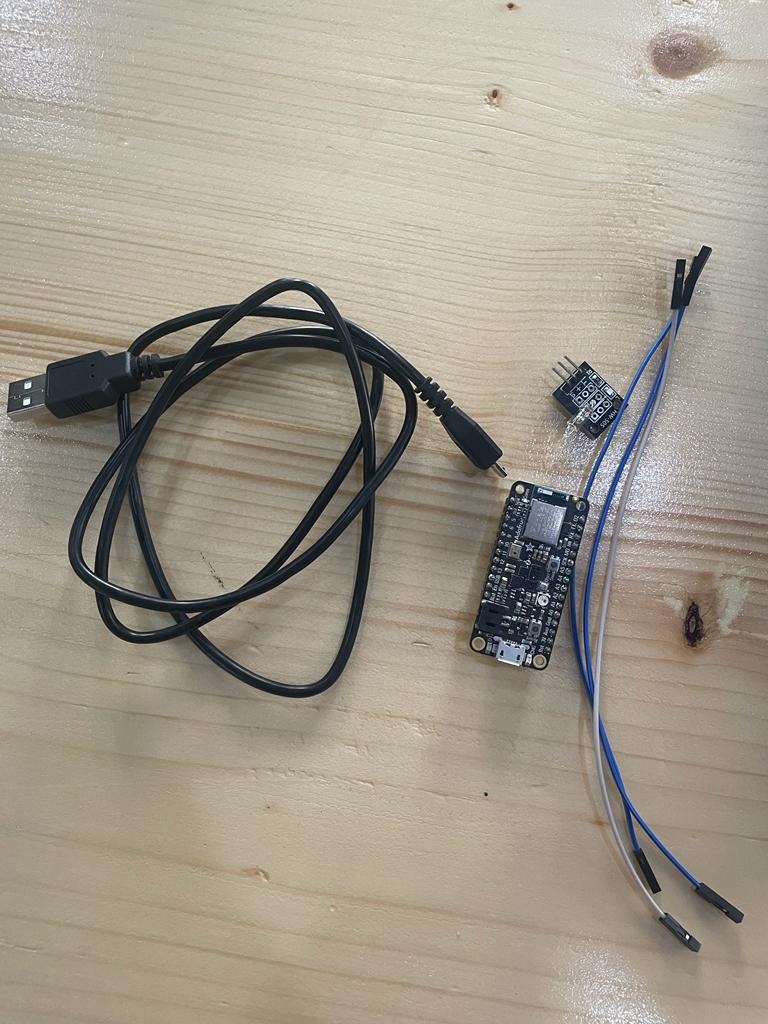7. Input & Output device¶
This week we get introduced to I/O devices and how to connect and use them with the microcontroller
Individual assignment¶
Input device¶
For the individual assignment, we took a random sensor from a box and the aim was to identify it and know how to connect it and program it as an Input device.

This is the sensor I got and after I search about it I found that this sensor is called a tilt switch sensor. This sensor from its name can detect if it is tilted by having a mercury drop in it.
After that, I found the datasheet for this sensor so I can know how to connect and program it.
Then I get the parts I needed and I start connecting them.

After making the connections I opened the Arduino IDE and start writing the code.
int led_pin = 13; // Define the LED interface
int switch_pin = 6; // Definition of mercury tilt switch sensor interface
int val; // Defines a numeric variable
void setup()
{
pinMode(led_pin, OUTPUT);
pinMode(switch_pin, INPUT);
}
void loop()
{
val = digitalRead(switch_pin); // check mercury switch state
if(val == HIGH)
{
digitalWrite(led_pin, HIGH);
}
else
{
digitalWrite(led_pin, LOW);
}
}
This code is for testing the sensor if the sensor tilts the built-in led at the microcontroller will work.
Hero-video¶
Output device¶
An output device is any piece of hardware equipment which converts information into human-readable form. My output device was a servo motor wich is a motor that sweep 180 degree

I searched the internet for the datasheet of this device click here to access it I used the data sheet to know all of the information I needed to program this device. After that, I start writing the code.
output code¶
#include <Servo.h>
Servo myservo; // create servo object to control a servo
// twelve servo objects can be created on most boards
int pos = 0; // variable to store the servo position
void setup() {
myservo.attach(9); // attaches the servo on pin 9 to the servo object
}
void loop() {
for (pos = 0; pos <= 180; pos += 1) { // goes from 0 degrees to 180 degrees
// in steps of 1 degree
myservo.write(pos); // tell servo to go to position in variable 'pos'
delay(15); // waits 15 ms for the servo to reach the position
}
for (pos = 180; pos >= 0; pos -= 1) { // goes from 180 degrees to 0 degrees
myservo.write(pos); // tell servo to go to position in variable 'pos'
delay(15); // waits 15 ms for the servo to reach the position
}
}
What this code does is will make the servo motor rotating infinitely
Hero-video¶
Input / Output¶
After succsfully prgraming the input device and output device, now I tried to cobine them such that if I got a signal from the input device which is the tilt sensor, the output which is the servo motor will rotate. I started by connecting the two device to the microcontroller. Then, I combined the codes wrote above.
IO code¶
#include <Servo.h>
int switch_pin = 6; // Definition of mercury tilt switch sensor interface
int val; // Defines a numeric variable
Servo myservo; // create servo object to control a servo
int pos = 0; // variable to store the servo position
void setup()
{
myservo.attach(9); // attaches the servo on pin 9 to the servo object
pinMode(switch_pin, INPUT);
}
void loop()
{
val = digitalRead(switch_pin); // check mercury switch state
if(val == HIGH)
{
for (pos = 0; pos <= 180; pos += 1) { // goes from 0 degrees to 180 degrees
// in steps of 1 degree
myservo.write(pos); // tell servo to go to position in variable 'pos'
delay(15); // waits 15 ms for the servo to reach the position }
else
{
for (pos = 180; pos >= 0; pos -= 1) { // goes from 180 degrees to 0 degrees
myservo.write(pos); // tell servo to go to position in variable 'pos'
delay(15); // waits 15 ms for the servo to reach the position }
}
This code first will read the signal from the input device such that if tilted the output device which is the motor will rotate
Hero-video¶
I was a fun week for me since I love electronics and I did not face any problem